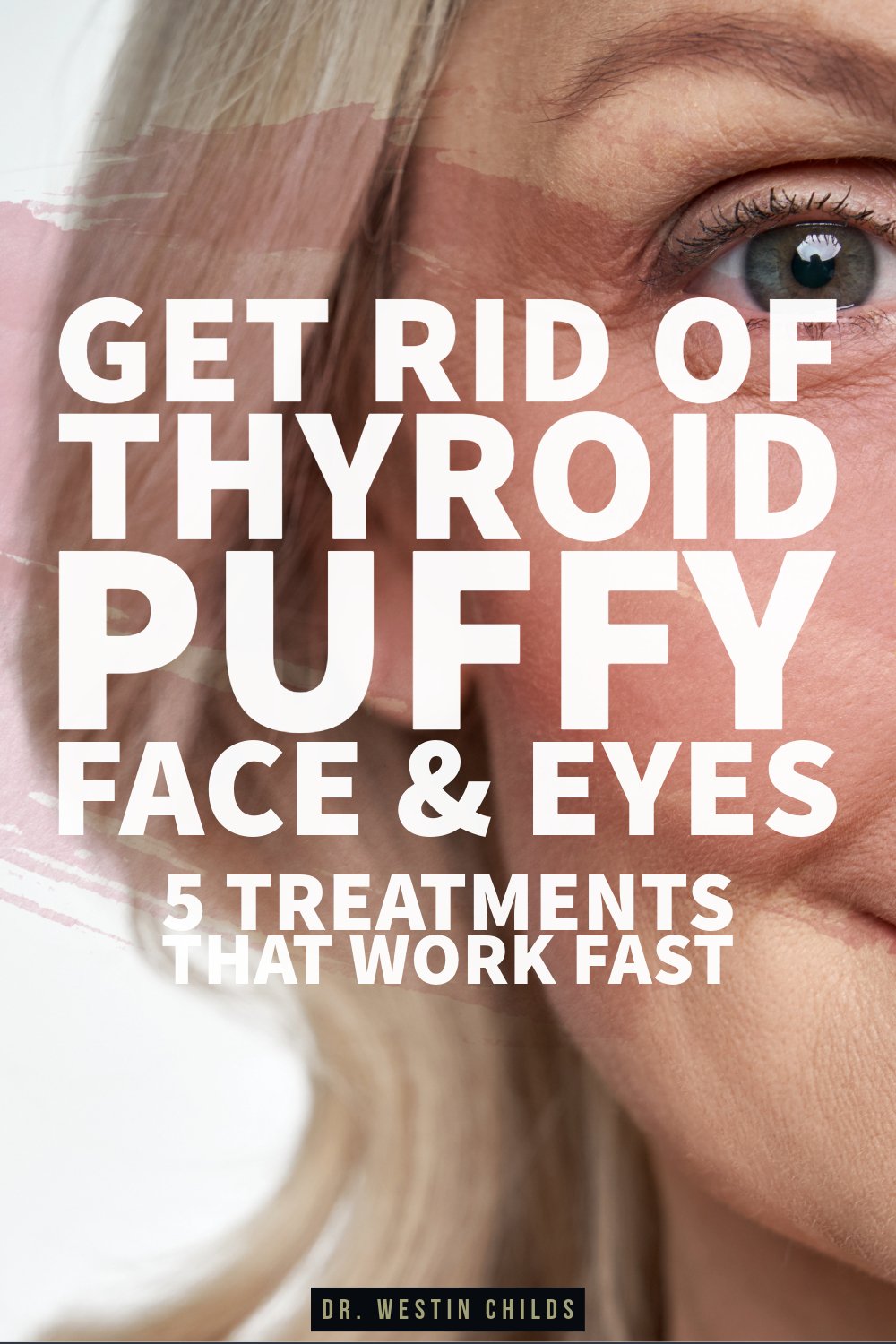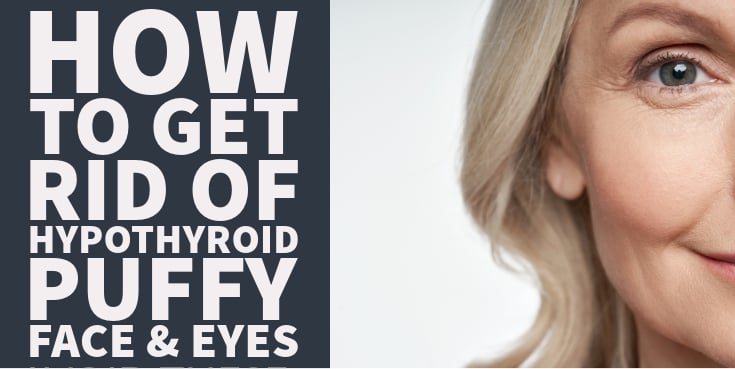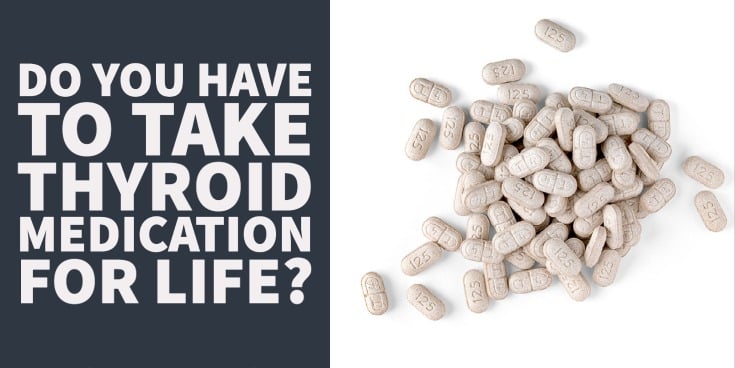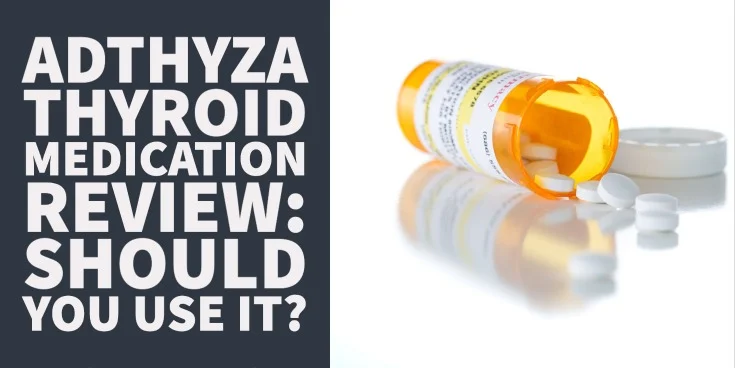Hypothyroidism usually doesn’t cause problems with your eyes but it can definitely cause problems for your face and the skin around your eyes.
And when it does, you’ll end up with a puffy face and bags around your eyes (1).
Not only are these side effects common, they can be cosmetically annoying because they impact your physical appearance.
If you are a thyroid patient who dislikes waking up with a round, puffy face or eyes, I’ve got some good news for you:
There are several things you can do to eliminate them right now.
DOWNLOAD FREE RESOURCES
Foods to Avoid if you Have Thyroid Problems:
I’ve found that these 10 foods cause the most problems for thyroid patients. Learn which foods you should avoid if you have thyroid disease of any type.
The Complete List of Thyroid Lab tests:
The list includes optimal ranges, normal ranges, and the complete list of tests you need to diagnose and manage thyroid disease correctly!
#1. Make Sure Your Thyroid Is Optimal
The first and most important step?
Make sure your thyroid is optimal.
What this means is that you have not just “enough” thyroid hormone but an “optimal” amount.
This distinction matters because many doctors treat thyroid patients until they have enough medication to look good on paper but not enough to feel great in real life.
Having an optimal amount of thyroid hormone means that your thyroid symptoms are completely controlled.
In other words, you won’t have puffy eyes or facial swelling.
And you also won’t have problems like weight gain or hair loss.
It can get a little tricky, though, because more than just your thyroid can cause these symptoms.
But no matter what, you should always start by optimizing your thyroid medication.
If that solves your problem then you know it was related to your thyroid. If it doesn’t then you can try the other treatments we are about to discuss.
By the way, the best way to get optimal is by taking a combination of several thyroid hormones and by looking at your free thyroid hormone levels, not just your TSH.
Usually, this means taking a combination of T4, T3, and T2.
If you’re like most people and only using levothyroxine then you are only getting T4.
Getting your thyroid to optimal status is great, but it doesn’t solve problems immediately because it will take about 6 weeks for your thyroid to reach a new steady state.
On top of this, it takes time to tweak your dose to get everything just right.
For these reasons, you need to do more than just get your thyroid under control.
Which is why we need to talk about #2 on this list.
#2. Use Cold Temperatures To Your Advantage
If you want to get rid of facial swelling and puffiness quickly, take advantage of cold temperatures.
The facial swelling and eye puffiness from your thyroid are caused by fluid.
And the reason for the fluid has to do with how your thyroid impacts your capillary walls (2).
When thyroid hormone is low, your capillaries will become more permeable which causes fluid to leak from them.
Because the skin on your face is so superficial, a small amount of fluid makes a big difference in your appearance.
The good news is that you can stop this problem in its tracks with the use of cold temperatures.
Cold temperatures cause vasoconstriction of the capillaries which will slow down the leakage of fluid (3).
This treatment works well but it’s short-lived and doesn’t solve the underlying problem.
But it’s a great way to reduce facial swelling if you’re in a hurry or if you are trying to look presentable for something important.
You can pretty much throw anything that’s ice cold on your face and it will work.

The best option is a frozen eye mask meant for just that but you can also get by with a spoon placed in a freezer or a frozen bag of vegetables.
Slap those on your face or eyes for 15-20 minutes upon waking up and you should see a noticeable difference.
Remember, though:
This is just a temporary measure, it’s something to do to alleviate your symptoms while you optimize your thyroid.
On top of this, there are some other things that you can do that are more preventative.
Which brings us to #3:
#3. Enhance Lymphatic Drainage
To try and prevent it from happening in the future, focus on your lymphatics.
Your lymphatic system is what your body uses to drain waste and fluid when it gets into your tissues.
This includes the fluid that accumulates around your face and eyes.
But because the lymphatic system isn’t under pressure like your arterial system, it drains much more slowly which is why swelling sticks around for a while.
You can accelerate its movement, though, with some simple physical therapies.
And for a few bucks on Amazon, you can purchase tools to help.
An example would be a dry brush and another would be a gua sha.
Dry brushing can be used over your entire body, including your face. And it’s primary purpose is to encourage exfoliation and lymphatic drainage.
But because the skin on your face can be sensitive, you may want to use a gua sha instead.
Gua sha has a more mild exfoliating effect but has a more pronounced effect on the lymphatic system (4).
Using one improves the muscle tone in the face, may encourage a more youthful appearance, and helps get rid of extra fluid.
And if you don’t want to use either of these, you can always opt for facial yoga.
Physical manipulation of the muscles in your face also encourages lymphatic drainage and this method is 100% free.
You can find all sorts of free facial yoga routines on YouTube.
There are even some recent studies to suggest that facial yoga can help reduce wrinkles (5) by promoting collagen production.
#4. Minimize Salt & Sodium Intake
Another preventative measure you can take is to watch your salt intake.
Salt, which contains high amounts of sodium, can increase your blood pressure and force more fluid out of your capillaries.
To put this into perspective, think about what happens when you cry.
Most people, when they cry, will get puffy eyes.
And the reason for this has to do with the salt content of your tears.
As they run down the thin skin of your face, they create a gradient from their sodium content which drags water to the surface resulting in swelling.
The same sort of thing happens when you eat a lot of salt, except it comes from the inside instead of the outside.
This problem can be solved by simply reducing your salt intake.
But here’s the key:
Most of the salt that you are getting from your diet, isn’t coming from the table salt that you are adding to your food.
It’s coming from processed foods and restaurant foods (6).
Pretty much anything that is processed will have a huge amount of sodium added to it to try and improve the flavor.
Yes, it improves the flavor, but it comes at a cost for thyroid patients.
You’ll find sodium in cereal, pasta, soda, crackers, you name it.
So if you want to get serious about reducing your salt intake, you’re going to need to reduce how much processed food you eat.
Which is fine because doing so will not only improve your facial swelling but also your thyroid.
Before you cut your salt intake, there’s one final point here that should be mentioned:
Table salt may be the primary source of iodine in your diet.
This is important because iodine is needed for your thyroid to function optimally (7) and it shouldn’t be avoided even if you have a thyroid problem.
But if you aren’t taking an iodine supplement, removing table salt from your diet may mean you aren’t getting enough iodine.
So before you cut out salt, take stock of how much iodine you are getting and from what sources.
If you aren’t regularly eating seafood or fish then you may want to take a basic thyroid support supplement that contains iodine like this one.
#5. Some Other Basics
In addition to what I just mentioned, there are also a few other basic things you should be doing.
That includes making sure you get sunlight on your face every day.
Doing so will improve your vitamin D status which can help reduce inflammation (8) which is yet another potential cause of facial swelling and puffiness.
You don’t want too much sun exposure otherwise you’ll cause sun damage so 10-15 minutes a day is plenty.
Secondly, make sure you are drinking enough water.
This encourages the flushing out of excess sodium and, believe it or not, your thyroid actually works better when you’re hydrated.
And, third, make sure your sinuses are clear.
If you’re congested, it will put pressure on your face from the inside which causes venous stasis.
The sluggish movement of blood flow in the area is what contributes to that blueish hue under the eyes (9) that so many people have.
You can solve this problem by rinsing your sinuses a few times each day with a saline solution.
Finally, if you have access to it, you can use a red light.
Research has shown that red light therapy has a rejuvenating effect on the skin and some people have noted an improvement in under-eye bags and swelling with its use.
This is definitely a more expensive treatment, but if you can find one, consider using it.
Avoid These Treatments
What about things that may make your swelling worse? Or have minimal effects?
In this group, we have antihistamines and steroids.
Topical steroids may claim to reduce inflammation, but they often have very little if any benefit for facial puffiness.
And because the skin under the eyes is so thin, they can get absorbed into your body (10) and cause problems with your ability to create cortisol.
Anti-histamines may sound good, but they really only work for swelling related to allergies which isn’t typically the issue if you have a thyroid problem.
So in this situation, it’s often better to stick with the natural and simple treatments.
While facial swelling and puffiness are common, it’s important to know that your thyroid can cause other issues with your face as well.
And if you want to see how your thyroid can change the physical appearance of your face, check out this article next.
Scientific References
#1. https://www.ncbi.nlm.nih.gov/pmc/articles/PMC3219173/
#2. https://pubmed.ncbi.nlm.nih.gov/6684003/
#3. https://www.ncbi.nlm.nih.gov/books/NBK232852/
#4. https://www.sciencedirect.com/science/article/abs/pii/S1550830707001772?via%3Dihub
#5. https://www.ncbi.nlm.nih.gov/pmc/articles/PMC5885810/
#6. https://www.ncbi.nlm.nih.gov/pmc/articles/PMC9962803/
#7. https://www.ncbi.nlm.nih.gov/pmc/articles/PMC9459956/
#8. https://pubmed.ncbi.nlm.nih.gov/28576736/
#9. https://www.ncbi.nlm.nih.gov/pmc/articles/PMC2866558/
#10. https://www.ncbi.nlm.nih.gov/pmc/articles/PMC4171913/










